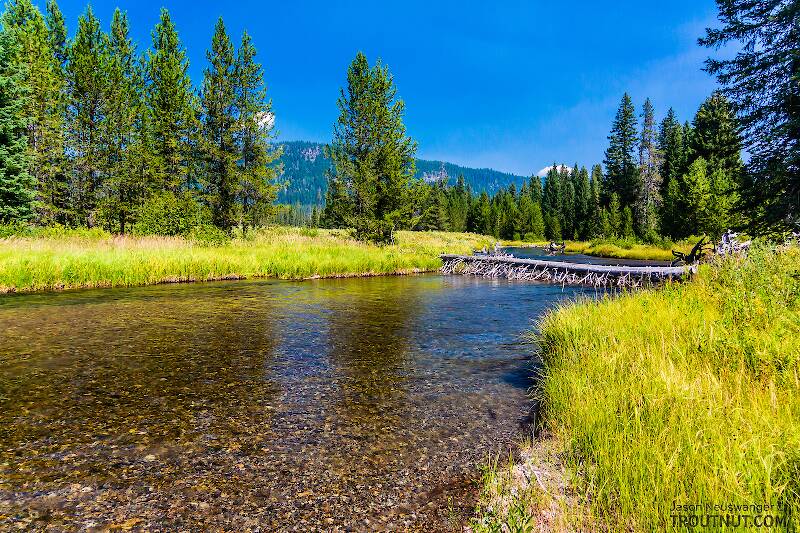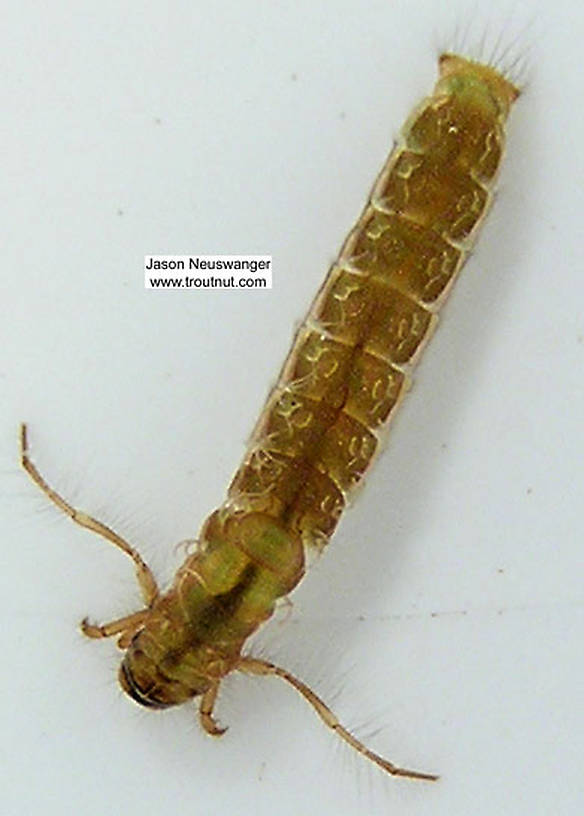
Salmonflies
Pteronarcys californica
The giant Salmonflies of the Western mountains are legendary for their proclivity to elicit consistent dry-fly action and ferocious strikes.
Featured on the forum

This specimen appears to be of the same species as this one collected in the same spot two months earlier. The identification of both is tentative. This one suffered some physical damage before being photographed, too, so the colors aren't totally natural. I was mostly photographing it to test out some new camera setting idea, which worked really well for a couple of closeups.

Troutnut is a project started in 2003 by salmonid ecologist Jason "Troutnut" Neuswanger to help anglers and
fly tyers unabashedly embrace the entomological side of the sport. Learn more about Troutnut or
support the project for an enhanced experience here.
Caddisfly Genus Molanna (Gray Checkered Sedges)
This genus may be abundant in slow midwestern rivers, although it is not widely regarded as important.
Where & when
Time of year : Mid-July to early September
Preferred waters: Lakes and slow rivers
In 267 records from GBIF, adults of this genus have mostly been collected during July (35%), June (34%), August (19%), and May (7%).
In 70 records from GBIF, this genus has been collected at elevations ranging from 3 to 10600 ft, with an average (median) of 1804 ft.
Genus Range
Hatching behavior
Pupae emerge on the surface and may take an unusully long time to struggle free of the film.Egg-Laying behavior
Females dive to the bottom to oviposit.Larva & pupa biology
Diet: Plant matter, plankton, smaller insects
Substrate: Sand or mud
Shelter type: Flat rock pieces with a "hood" that covers the head of the insect. LaFontaine in Caddisflies compares its shape to a cobra head.
Specimens of the Caddisfly Genus Molanna
1 Larva
Start a Discussion of Molanna
References
- LaFontaine, Gary. 1981. Caddisflies. The Lyons Press.
Caddisfly Genus Molanna (Gray Checkered Sedges)
Taxonomy
Species in Molanna: Molanna tryphena, Molanna uniophila
4 species (Molanna blenda, Molanna cinerea, Molanna flavicornis, and Molanna ulmerina) aren't included.


